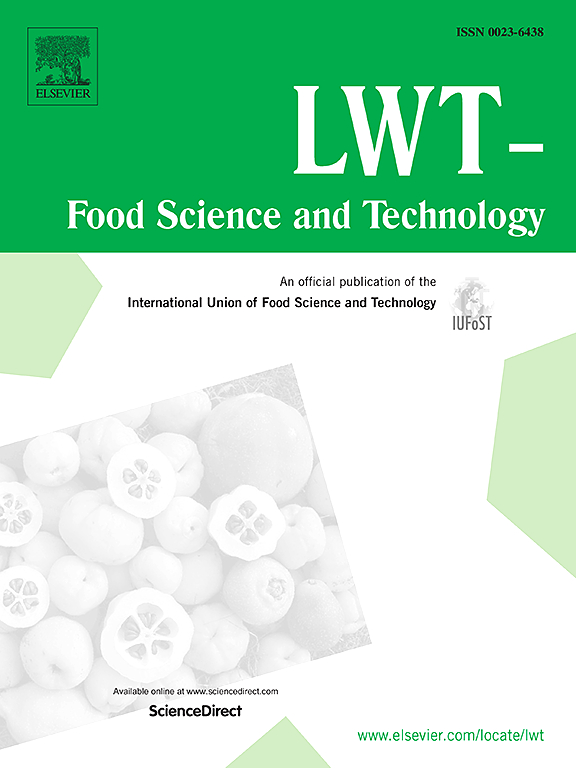Carvacrol maintains antioxidant capacity in goji fruit by increasing the content of bioactive compounds
IF 6
1区 农林科学
Q1 FOOD SCIENCE & TECHNOLOGY
引用次数: 0
Abstract
Fresh goji berries are prone to decay and spoilage, resulting in economic losses. We investigated the effects of carvacrol (CVR) on the natural disease incidence and quality of goji berries by fumigating with varying CVR concentrations (0.06, 0.12, and 0.24 μL/mL). The results showed that CVR treatment inhibited the natural decay of goji berries by enhancing their quality, color, and total soluble solids/titratable acidity ratio. Moreover, 0.12 μL/mL CVR was determined to be the optimal concentration, as it maintained the sensory quality (except for aroma) and inhibited the disease incidence and preliminary disease expansion of goji fruit inoculated with Alternaria alternata. The treated berries exhibited elevated total phenolic content, total flavonoid content, ascorbic acid, glutathione, melatonin, total chlorophyll, and carotenoid levels. Higher hydrophilic and lipophilic total antioxidant activities and free radical scavenging capacities were also observed in the treated berries. Targeted metabolomics showed that treatment with 0.12 μL/mL CVR increased the levels of four phenolic acids (caffeic acid, chlorogenic acid, ferulic acid, and protocatechuic acid) and two flavonoids (naringenin and quercetin) in goji berries, thereby activating the gene expression of the phenylpropanoid metabolic pathway. In summary, CVR treatment delayed fruit senescence and the decline in fruit quality, promoted the accumulation of bioactive compounds, and improved antioxidant capacity and disease resistance by activating the phenylpropanoid metabolic pathway.
香芹酚通过增加生物活性化合物的含量来维持枸杞的抗氧化能力
本文章由计算机程序翻译,如有差异,请以英文原文为准。
求助全文
约1分钟内获得全文
求助全文
来源期刊

LWT - Food Science and Technology
工程技术-食品科技
CiteScore
11.80
自引率
6.70%
发文量
1724
审稿时长
65 days
期刊介绍:
LWT - Food Science and Technology is an international journal that publishes innovative papers in the fields of food chemistry, biochemistry, microbiology, technology and nutrition. The work described should be innovative either in the approach or in the methods used. The significance of the results either for the science community or for the food industry must also be specified. Contributions written in English are welcomed in the form of review articles, short reviews, research papers, and research notes. Papers featuring animal trials and cell cultures are outside the scope of the journal and will not be considered for publication.
 求助内容:
求助内容: 应助结果提醒方式:
应助结果提醒方式:


